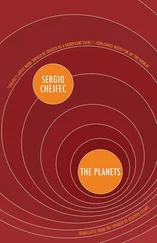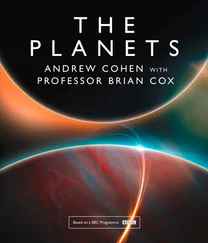‘Can you imagine my joy,’ Einstein asked a colleague in a letter, ‘that the equations of the perihelion movement of Mercury prove correct? I was speechless for several days with excitement.’
Vulcan fell from the sky like Icarus in the wake of Einstein’s pronouncements, while Mercury gained new fame from the role it had played in furthering cosmic understanding.
Still Mercury frustrated observers who wanted to know what it looked like. One German astronomer postulated a dense cloud layer completely shrouding Mercury’s surface. In Italy, Giovanni Schiaparelli of Milan decided to track the planet overhead in daylight, despite the Sun’s glare, in the hope of getting clearer views of its surface. By pointing his telescope upward into the midday sky, instead of horizontally during dawn or dusk, Schiaparelli avoided the turbulent air on Earth’s horizon, and also succeeded in keeping Mercury in his sights for hours at a time. Beginning in 1881, avoiding coffee and whisky lest they dull his vision, and forswearing tobacco to the same end, he observed the planet on high at its every elongation. But the pallor of Mercury against the daytime sky confounded his efforts to perceive surface features. After eight years at this Herculean task, Schiaparelli could report nothing but ‘extremely faint streaks, which can be made out only with greatest effort and attention’. He sketched these streaks, including one that took the shape of the number five, on a rough map of Mercury he issued in 1889.
A more detailed map followed in 1934, drawn as the culmination of a decade-long study by Eugène Antoniadi at the Meudon Observatory outside Paris. By his own admission, Antoniadi saw little more than Schiaparelli, but, being an excellent draughtsman and having a bigger telescope, he rendered his faint markings with better shading, and named them for Mercury’s classical associations: Cyllene (for the god’s natal mountain), Apollonia (for his half-brother), Caduceata (for his magic wand), and Solitudo Hermae Trismegisti – the Wilderness of Thrice-Great Hermes. Although these suggestions have disappeared from modern maps, two prominent ridges discovered on Mercury by spacecraft imaging are now named ‘Schiaparelli’ and ‘Antoniadi’.
Both Schiaparelli and Antoniadi assumed, given the persistence of the features they discerned over long hours of observation, that only one side of Mercury ever came into view. They thought the Sun had locked the little planet into a pattern that flooded one of its hemispheres with heat and light while leaving the other in permanent darkness. Likewise many of their contemporaries and most of their followers up to the mid-1960s believed that Mercury maintained eternal ‘day’ on one side and ‘night’ on the other. But the Sun constrains the rotation and revolution of Mercury according to a different formula: the planet spins around its axis once every 58.6 days – a rate rhythmically related to its orbital period, so that Mercury completes three turns on its axis for every two journeys around the Sun.
The 3:2 pattern affects observers on Earth by repeatedly offering them the same side of Mercury six or seven apparitions in a row. Schiaparelli and Antoniadi indeed beheld an unchanging face of Mercury throughout their studies, and must be forgiven for reaching the wrong conclusion about its rotation, since the planet’s behaviour indulged them in their error.
Throughout the twentieth and into the twenty-first century, Mercury has continued to be a difficult target. Even the Hubble Space Telescope, orbiting above the Earth’s atmosphere, avoided looking at Mercury, for fear of pointing its delicate optics so dangerously close to the Sun, and only one spacecraft has so far braved the hostile heat and radiation of the near-Mercury environment.
Mariner 10 , Earth’s emissary to Mercury, flew by the planet twice in 1974 and once more in 1975. It relayed thousands of pictures and measurements of a landscape riddled with crater holes, from small bowls to giant basins. Light or dark trails of debris marked the places where newer assaults had overturned the rubble of the old. Lava that flowed among the impact scars had smoothed over some of the depressions, but overall poor battered Mercury preserved a clear record of the era, ended nearly four billion years ago, when leftover fragments of the Solar System’s creation menaced the fledgling planets.
The most violent attack on Mercury inflicted a wound eight hundred miles wide, which has been named Caloris Basin (‘the Basin of Heat’). The mile-high mountains on Caloris’s rim must have sprung up in response to the massive impact explosion that excavated the Basin, and all around the mountains, further signs of disturbance lay in ridges and rough ground rippling out for hundreds of miles. The collision at Caloris also sent shock waves clear through Mercury’s dense, metallic interior, to set off quakes that lifted the crust on the far side of the planet and cut it to pieces.
Mariner 10 photo montages, which captured less than half of Mercury’s surface, revealed a network of scarps and fault lines that indicate the whole planet must have shrunk to its present dimensions from some larger beginning. When Mercury’s interior contracted, the global crust readjusted itself to fit the suddenly smaller world – like some furtive trick of the god Mercury, disguising himself.
After a thirty-year hiatus in exploration, a new mission called MESSENGER (an acronym for MErcury Surface, Space ENvironment, GEochemistry and Ranging) is now en route to Mercury. Launched in August 2004, but unable to fly as quickly or directly as its namesake, the craft will not reach Mercury’s vicinity until January 2008. At first sight of the planet, MESSENGER will start a detailed mapping effort requiring three flybys of Mercury over the following three years, while the spacecraft orbits the Sun, protected under a sunshade made of ceramic cloth. Then, in March 2011, MESSENGER will manoeuvre into orbit around Mercury itself, for a year-long odyssey (as measured in Earth time) to monitor the planet through two of its long days. Circling Mercury rapidly and repeatedly every twelve hours, MESSENGER will function as a new oracle, streaming answers to the questions posed by anxious truth-seekers on Earth.
*The ancients recognized seven planets: Sun, Moon, Mercury, Venus, Mars, Jupiter and Saturn.
*Gassendi quotes here from Ovid, referring to the Sun god Apollo by his other name, Phoebus.
For a breeze of morning moves,
And the planet of Love is on high,
Beginning to faint in the light that she loves
On a bed of daffodil sky,
To faint in the light of the sun she loves,
To faint in his light, and to die.
Alfred, Lord Tennyson, ‘Maud’
Now ‘morning star’, now ‘evening star’, the bright ornament of the planet Venus plays prelude to the rising Sun, or postscript to the sunset.
For months at a time Venus will vault the eastern horizon before dawn and linger there through daybreak, the last of night’s beacons to fade. She begins these morning apparitions close to the Sun in time and space, so that she arrives in a lightening sky. But as the days and nights go by, she comes up sooner and ventures further from the Sun, rising while Dawn is still a distant idea. At length she reaches the end of her tether, and the Sun calls her back, making her rise a little bit later each night, till she again verges on the day. Then Venus vanishes altogether for the time it takes her to pass behind the Sun.
After fifty days, on average, she reappears at the Sun’s other hand, in the evening sky, to be hailed as evening star for months to come. Shimmering into view as the Sun goes down, Venus hangs alone in the twilight. The first few sunsets find her bathed in the afterglow colours of the western horizon, but at length Venus comes to light already high overhead, where she dominates night’s onset. Who knows how many childhood wishes are squandered on that planet before the gathering darkness brings out the stars?
Читать дальше












